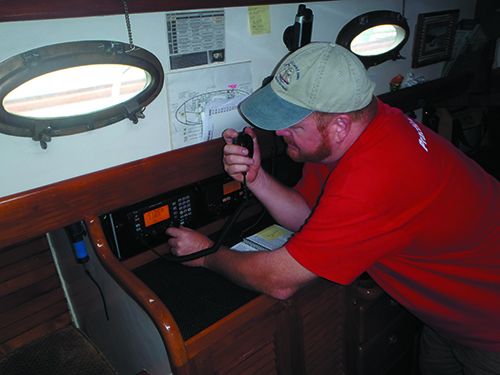
One chief difference between a portable satphone and single-sideband radio is that the former is typically point-to-point device-one caller contacting one or more designated recipients. An SSB transmission can be received by any device within broadcast range listening on that frequency. As with any apples-to-oranges comparison of two different systems providing similar functions (both SSB and a satphone can deliver voice communications and email, for example) both will invariably have pros and cons.
Operationally, the most obvious advantage of a satellite phone is its familiar form and operation. Even a non-sailor who has never used a VHF can probably figure out how to use a satphone. Another advantage is that its easy to call a landline phone with a satphone. And, for the sailor who likes to do his own installations, the satellite device greatly simplifies setup.
A satellite phones portability is also a plus. You can bring it on shore excursions, or even bring it with you should you need to abandon ship.

at sea, particularly among ocean voyaging sailors.
There are also cons to handheld sat phones: just like cell phones, handheld portable satphones are not meant to provide ship-to-ship safety communications or communications with rescue vessels or aircraft. Private party contractors like GEOS Alliance will help route rescue calls placed via satellite devices to the Coast Guard, but the U.S. Coast Guard doesn’t advocate cell phone or satellite phone as a primary means for making distress calls. They have proven, however, to be a very effective backup.
One of the main reasons sailors choose a marine SSB over a satellite phone is so that they can participate in various regional safety and cruising nets that allow cruising sailors to stay in touch and share local knowledge-and if needed, ask for help. You don’t, of course, need a transceiver to simply listen to these stations or nets-an ordinary portable multi-band radio that can tune into SSB frequencies will do.
An additional safety benefit of the modern SSB is Digital Selective Calling (DSC). DSC is an essential element in Global Maritime Distress and Safety System. All commercial ships mandated to have DSC are required to monitor DSC marine SSB frequencies while at sea. In the event of an emergency, they can receive your exact location and nature of distress at the push of a button.
As with VHF DSC, the DSC function effectively takes the search out of search and rescue, allowing rescue agencies (or nearby Good Samaritans) to provide immediate assistance, rather than waste valuable time trying to locate you first.
Although direct cost comparisons between SSB and satphones will depend on the particular unit or system being considered, its fairly typical to find that the initial cash outlay will likely be a bit less for a portable satphone (particularly if installation costs of the SSB are factored in). However, a more accurate assessment is lifetime cost, which can be determined by factoring in the costs associated with each system over the years—.
For over-the-counter portable satphones, lifetime cost ultimately depends on the service plan selected, but it can mean hundreds of dollars in annual, recurring costs. For SSB, unless you’re utilizing some type of commercial service (for weather routing, email, etc), transmitting and receiving over the airwaves is free, and free is good.































